Are your cookies less than perfect? Let’s fix them with these baking tips for preventing common cookie problems!

Cookie Troubleshooting Guide
We all love freshly baked homemade cookies, but sometimes things don’t quite go as we envisioned them. There are a lot of little things that can go wrong to make your cookies less than perfect.
I’ve baked countless batches of cookies over the years, and I’ve encountered my fair share of subpar cookies. I’m here to help fix your cookie baking problems with some cookie baking tips for how to prevent the most common issues.
The Most Common Cookie Problems
In my experience of baking and discussing baking with many of you, these are the most common issues I’ve seen.
- Uneven baking
- Tough texture
- Over-spreading
- Sticking to the pan
- Dry texture
- Overly browned bottoms
- Over-baked
Most of these can be fixed with something very simple. Even minor tweaks can result in marked improvements in your cookie baking!
As a general reminder, keep in mind that if you choose to alter a recipe in any way, you may create other issues with your cookies. For instance, if you use a different type of flour or substitute for a major ingredient like butter or eggs, you’re likely to have very different results.
If you have any other issues not covered here, feel free to ask in the comments.
How to Prevent Common Cookie Problems
I’ve got simple fixes for most cookie problems. It can be something as simple as changing how you measure ingredients or checking your oven’s temperature. Armed with your new cookie knowledge, you’ll be ready to bake batch after batch of perfect cookies!
As a general rule to help make your cookies their best, be sure to get the basics right. Measure accurately, use good ingredients, read through the recipe completely before beginning, follow directions, be cautious with substitutions, and have fun!
And because we’re all here for the cookies (right???), I’ve included links to some of BoB’s most popular cookie recipes for a little baking inspiration. You’ll find those at the bottom of this post. (And you can find many, many more cookie recipes in the recipe index!)
Why are my cookies unevenly browned?
If some of your cookies seem more brown than others, the dough may not have been portioned equally. Using the same amount of dough for each cookie means that they will bake in the same amount of time. If some are too small, they’ll get too brown. If some are too big, then they’ll not get brown enough.
For drop cookies (like chocolate chip and oatmeal), the best way to portion dough is to use a cookie scoop. Cookie scoops are spring-release scoops that are available in various sizes. I never bake drop cookies without a scoop. I’ve talked much more about them in A Baker’s Guide to Cookie Scoops, which includes a handy chart for choosing the right size scoop.
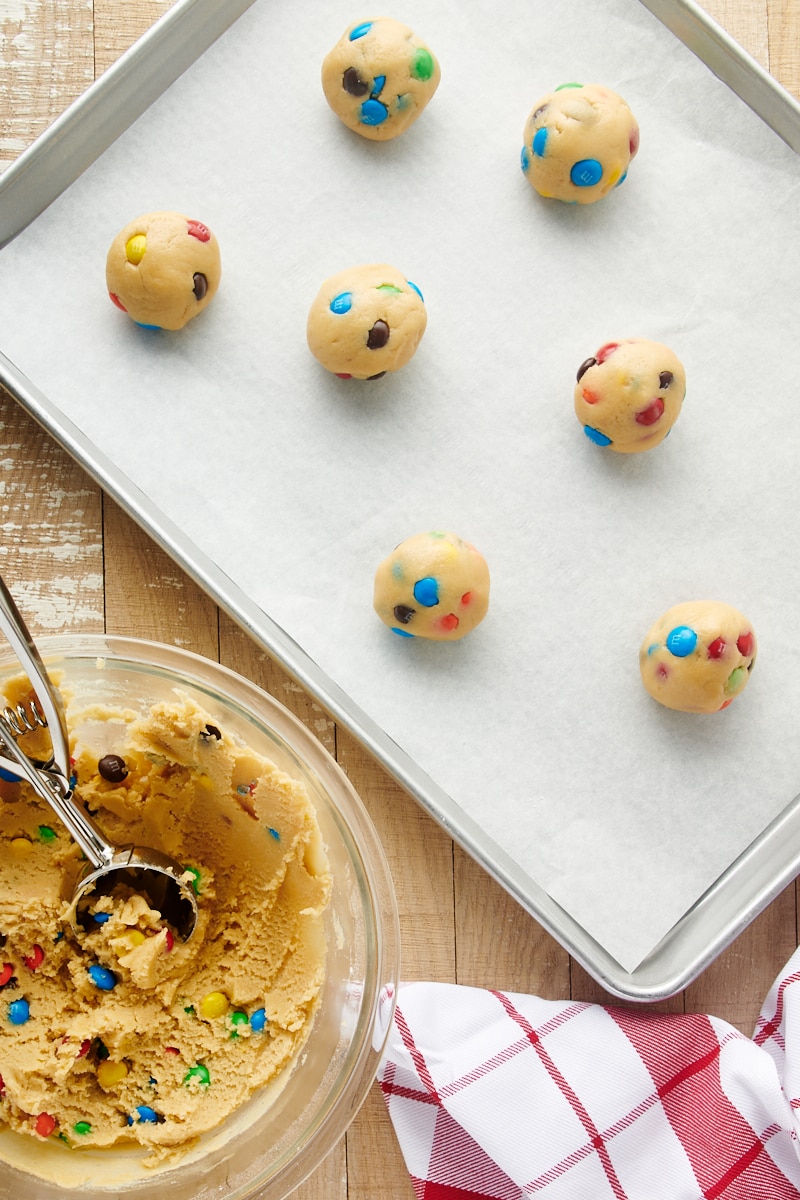
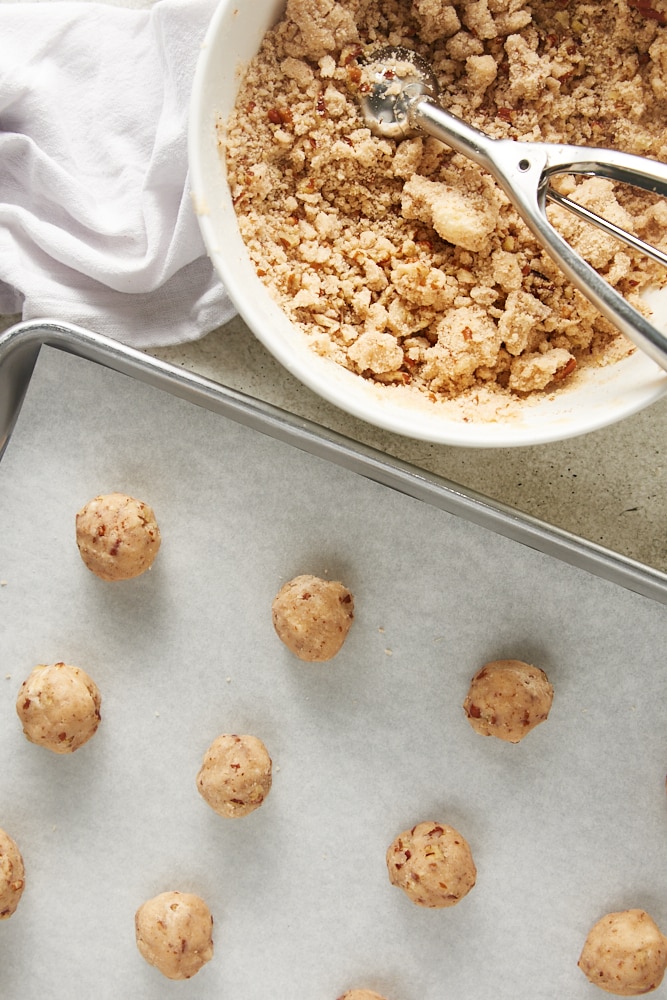
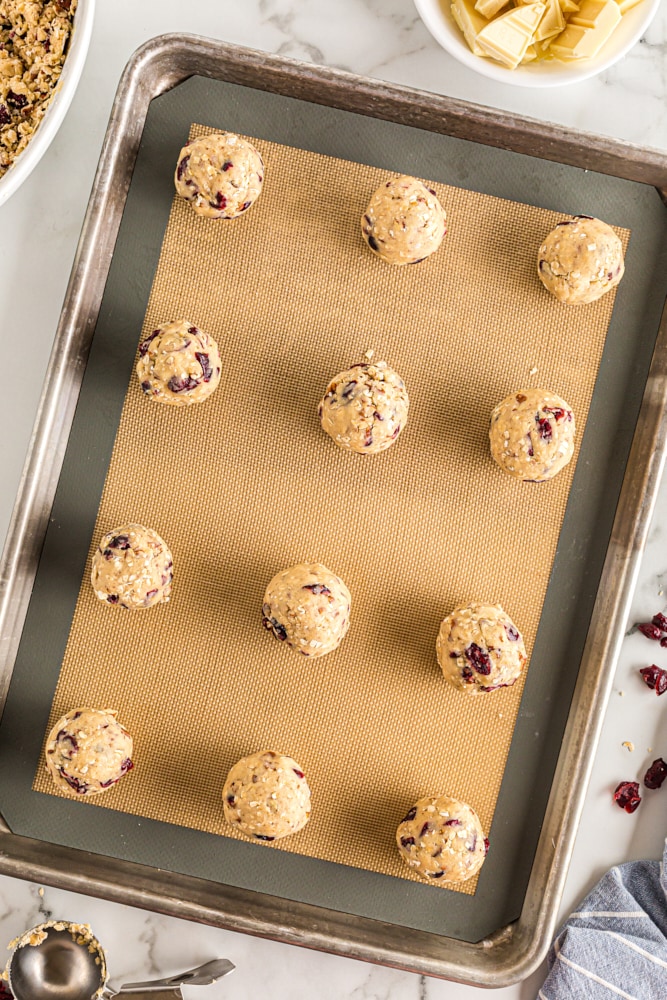
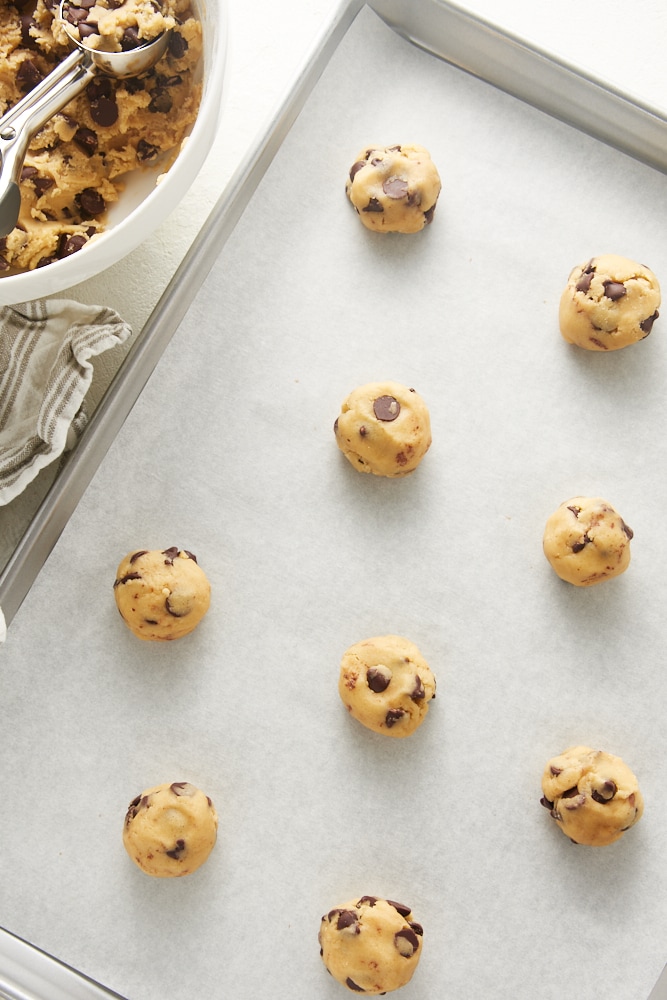
For slice and bake cookies, use a ruler or other guide to make sure the cookies are sliced to the same thickness. That may seem a bit fussy, but that extra step will reward you with beautiful, evenly baked cookies.
For cut-out cookies, make sure that the dough is rolled out to an even thickness. Again, a ruler is handy for this. There are also rolling pins with removable guides to gauge thickness as you roll the dough.

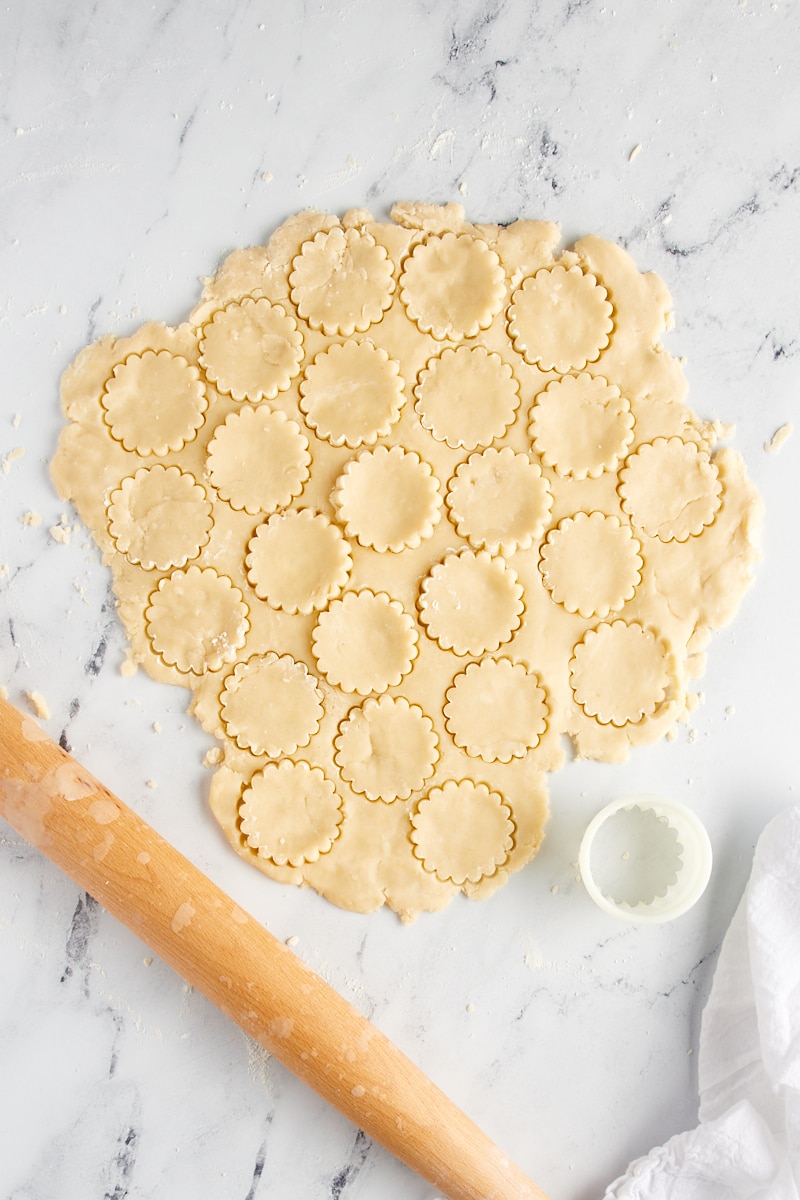
It’s also possible that there’s a hot or cold spot in your oven. You can test this by placing a single layer of bread slices on a sheet pan and baking at 350°F for a few minutes until the bread begins to toast. It will then be easy to tell if you have a hot or cold spot by any variance in the browning of the bread. (This also works with coconut, and you’ll have some toasted coconut for a baking project when you’re done!)
To try to counteract any hot or cold spots, you may need to rotate your pan about halfway through baking cookies for more even browning.
Why are my cookies tough?
The most common reason that cookies are tough is that the cookie dough was mixed too much. When flour is mixed into the dough, gluten begins to form. Gluten helps hold baked goods together, but too much gluten can lead to tough cookies.
When mixing the flour into the cookie dough, only mix the dough until no streaks of flour are visible. If adding nuts, chocolate chips, or another ingredient after the flour, you can even stop mixing the flour into the dough when there are a few streaks of flour visible in the dough. Then, add the other ingredients, and the flour will finish mixing into the dough as the other ingredients are stirred into the dough.
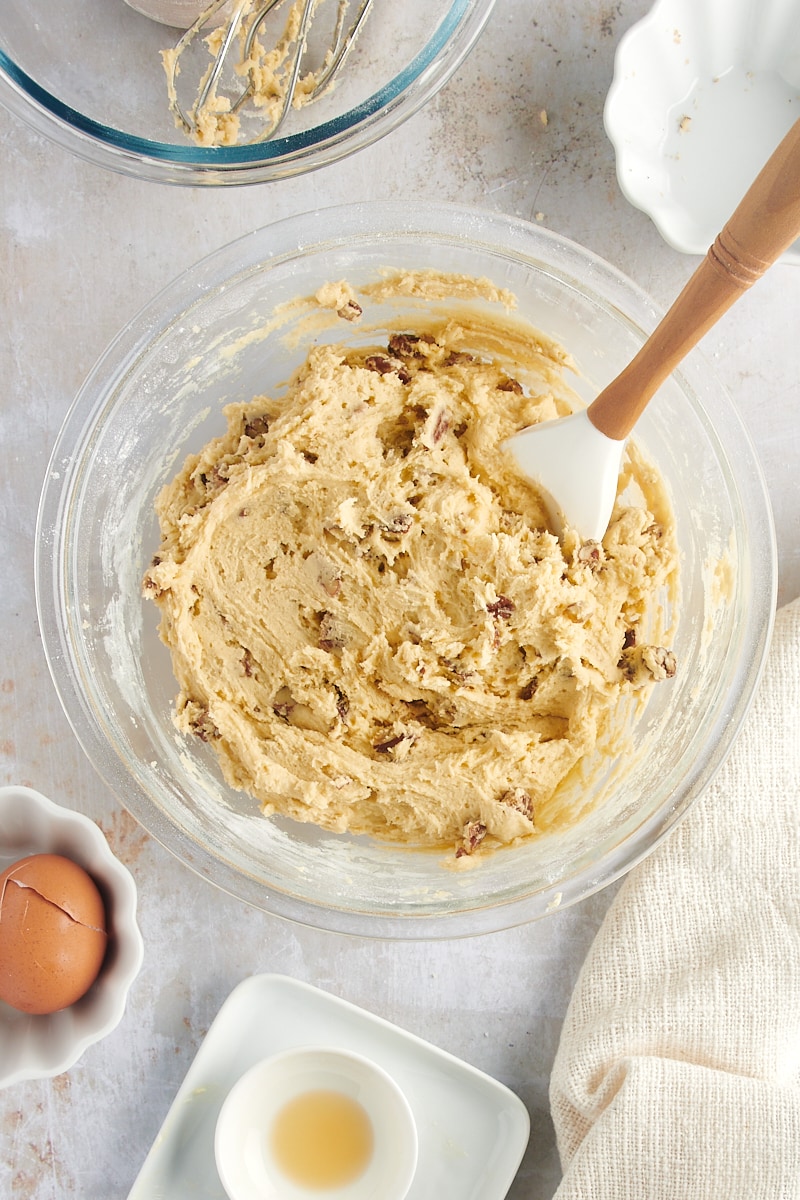
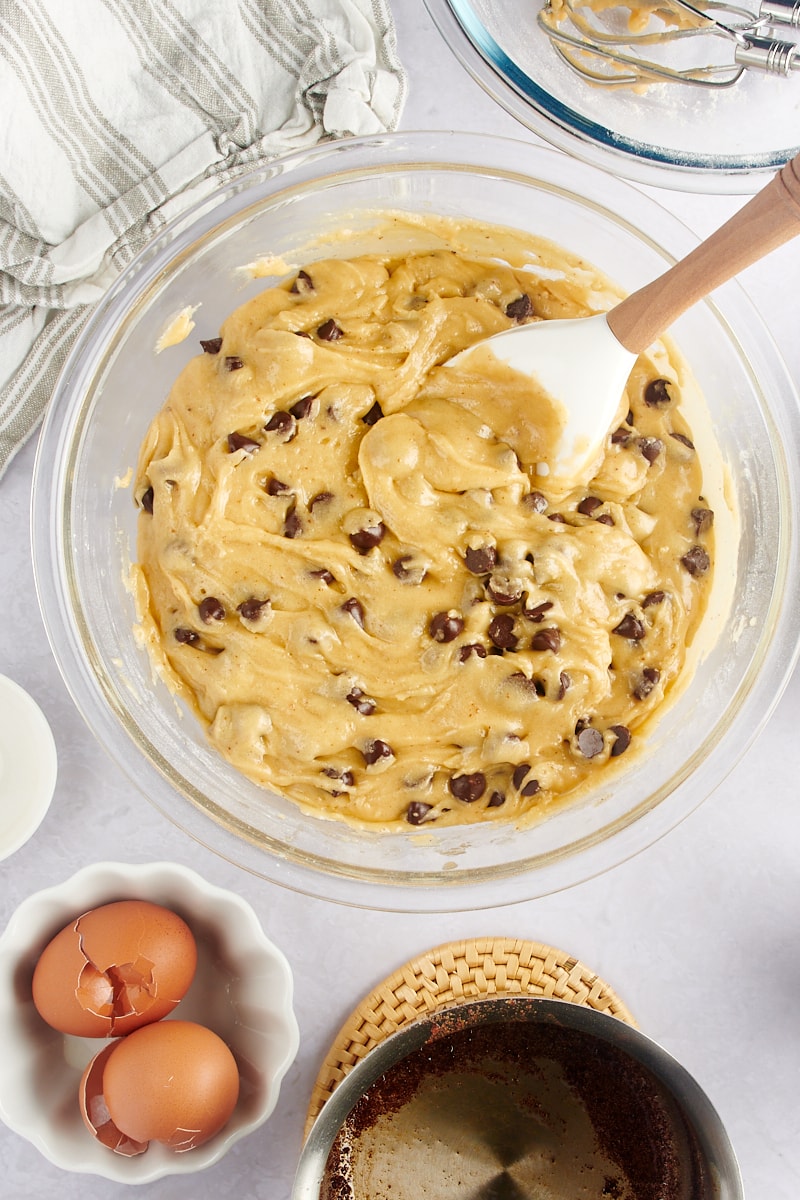


You can also let the dough rest before baking to let the gluten relax a bit. Many cookie recipes will direct you to chill the dough before baking for this reason and also for cutting down on how much your cookies spread.
Why do my cookies spread too much?
Many of the reasons that cookies spread too much are related to the temperature of the ingredients or the dough. The most likely problem is that the butter was too soft when it was beaten. Remember that butter starts to soften at about 68°F, so that’s significantly below room temperature for most of us.
It’s also possible that the dough may have become too warm before it was baked. In that case, simply place it in the refrigerator for about half an hour before baking.
Spreading can also be due to excessive greasing of the baking pans or placing cookie dough on warm pans. If it is necessary to reuse a baking pan while baking a batch of cookies, allow the pan to cool to room temperature before placing more dough on the pan.
For more about cookie spreading, see my post How to Keep Cookies from Spreading.
Why do my cookies stick to the pan?
Not greasing or lining baking pans can cause cookies to stick to the pans. Cookies can also stick if they are removed from the pans before they have cooled properly.
To prevent sticking, line the pans with parchment paper or silicone liners, or lightly grease the pan with butter or cooking spray. Keep in mind that excessive greasing can cause cookies to spread too much. You can read more about this in Unlined vs Lined Baking Sheets, but do know that I highly recommend lining pans versus greasing them.


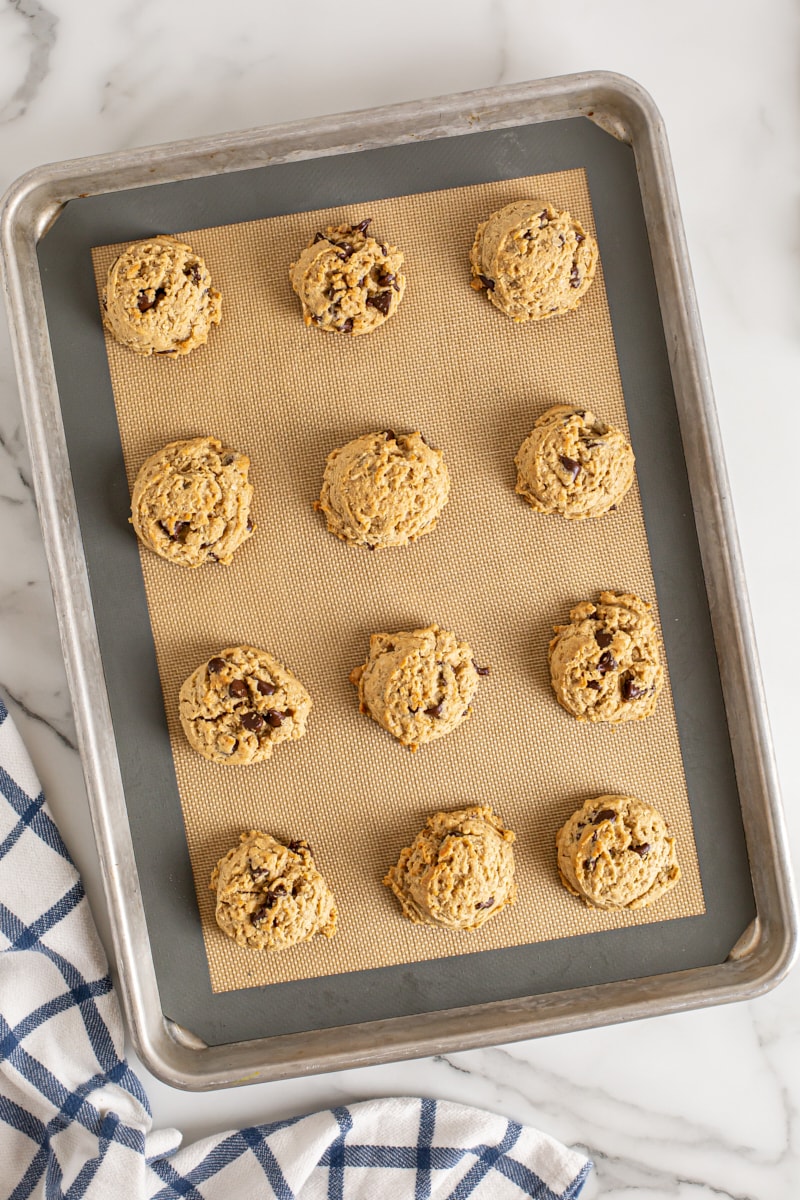

Be sure to place the pans of baked cookies on a wire rack to cool for a few minutes before removing them from the pan. This allows air to circulate around the pan to cool them more quickly and prevent too much carryover baking from the heat of the pan.
Why are my cookies dry?
The most common reason cookies are dry is too much flour. Over-measuring flour is a very common reason for most any baking recipe to fail. If you scoop your measuring cup down into the flour container to measure, then odds are you’re using too much.
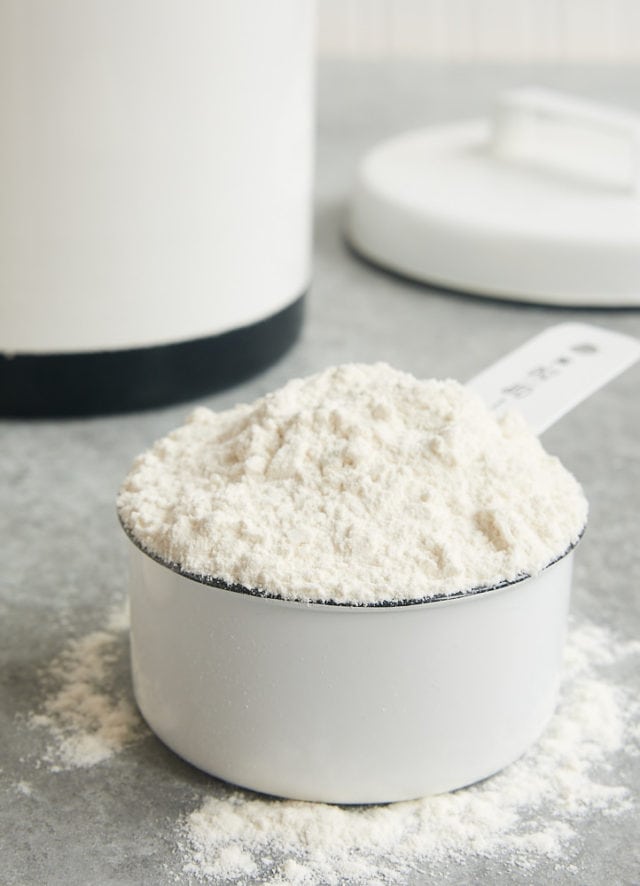
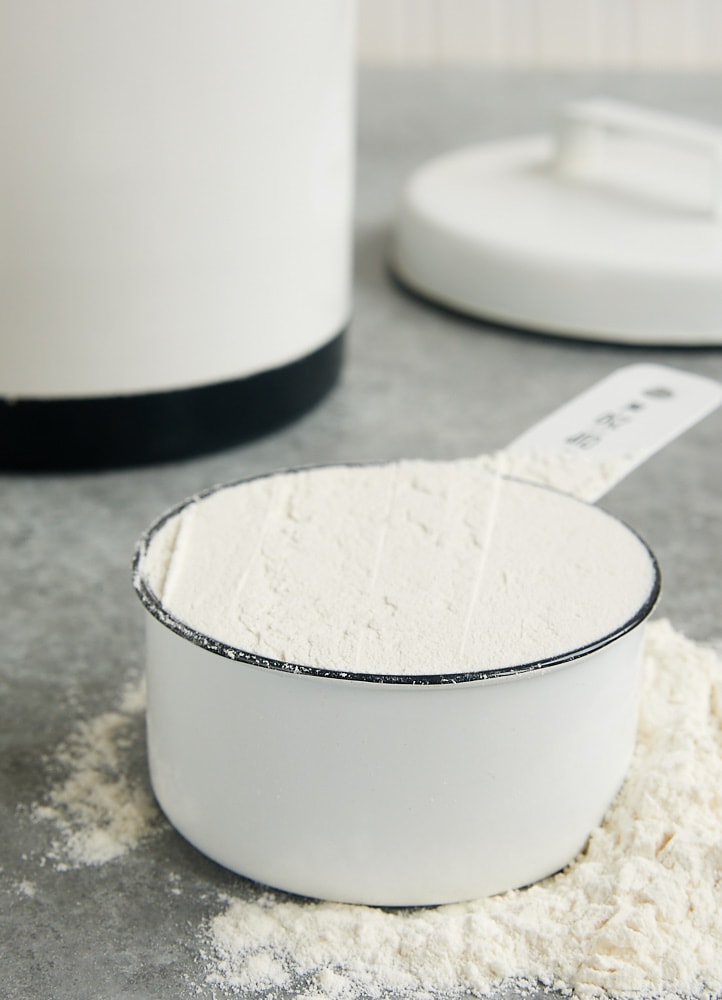
The best way to measure flour is by weight or the spoon and sweep method. It can make such a big difference. For my tips on how to measure flour properly, be sure to see How to Measure Flour.
Why are the bottoms of my cookies too brown?
If the cookies are baked perfectly except that the bottoms are overly brown, the most likely problem is the baking pan. A dark pan absorbs more heat and will bake the bottoms of the cookies faster. Use a metal pan with a dull finish for best results. (See How to Choose Baking Pans for more about the differences in pans.)
Also, be mindful of where your oven rack is during baking. As a general rule, you want to bake cookies in the top third of your oven. Some recipes may specify differently, but otherwise I assume that the top third is the best choice.
Why are my cookies overbaked?
If your cookies are consistently overbaked, that is very simply either due to temperature or time.
It’s not uncommon for your oven’s temperature reading to be inaccurate. An oven thermometer is an inexpensive tool that is invaluable to bakers. Place it inside the oven and compare its reading to your oven’s temperature setting to determine if the oven’s temperature is accurate. Then, adjust the temperature setting as needed to accommodate for any inaccuracy or get it professionally calibrated.
As for the time aspect, remember the saying that if something is done in the oven, it will be overdone out of the oven. Removing cookies from the oven doesn’t magically stop baking them. The residual heat will continue to bake them for a few minutes.

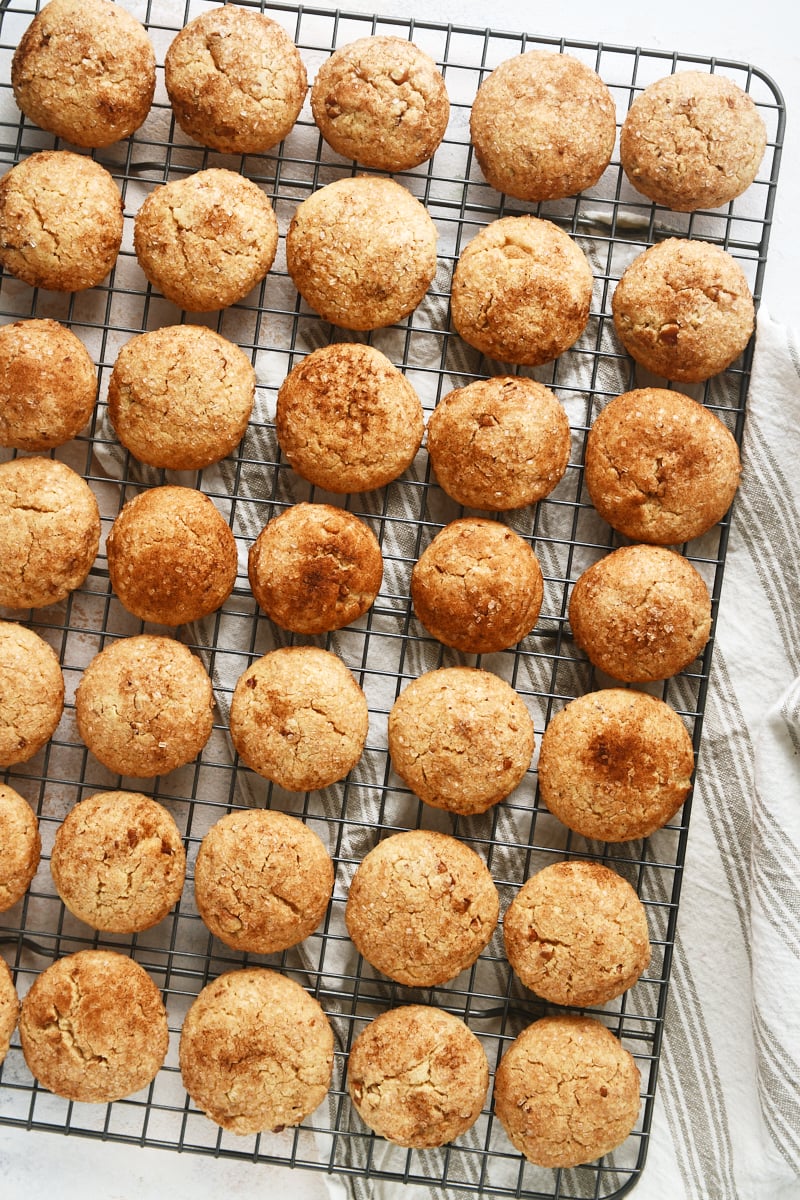
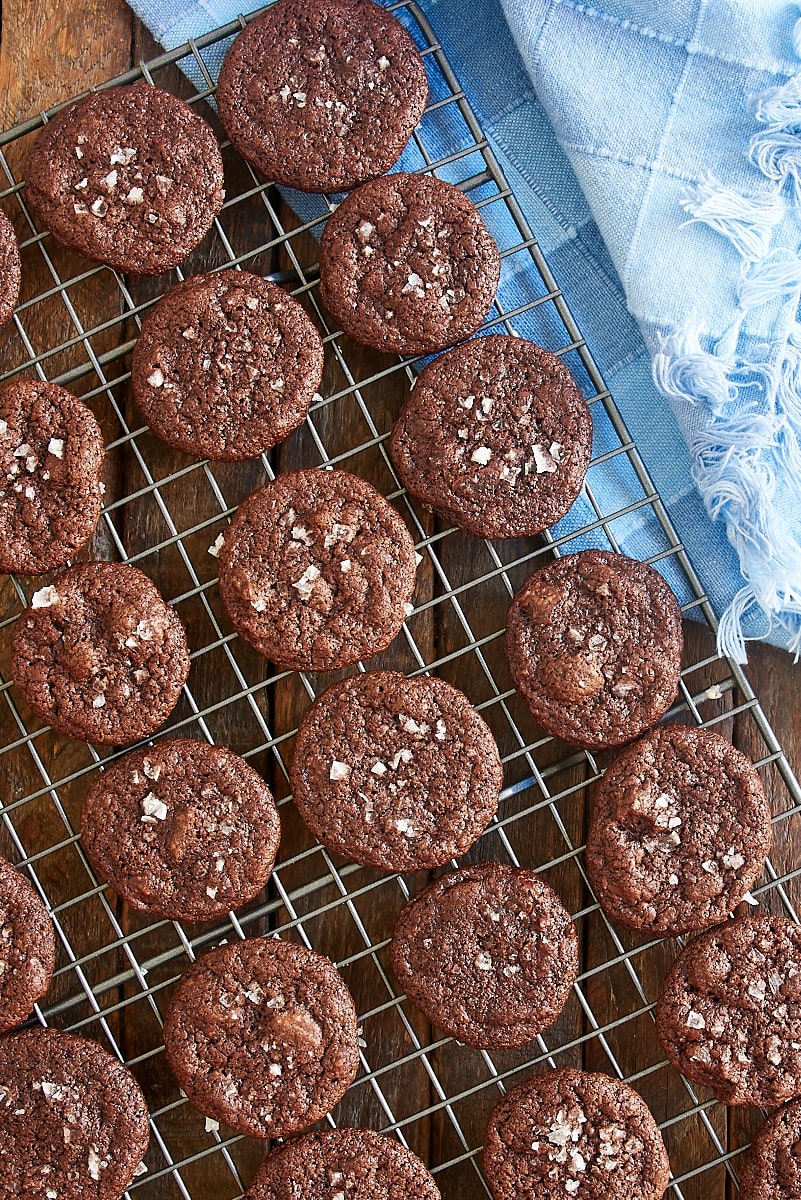
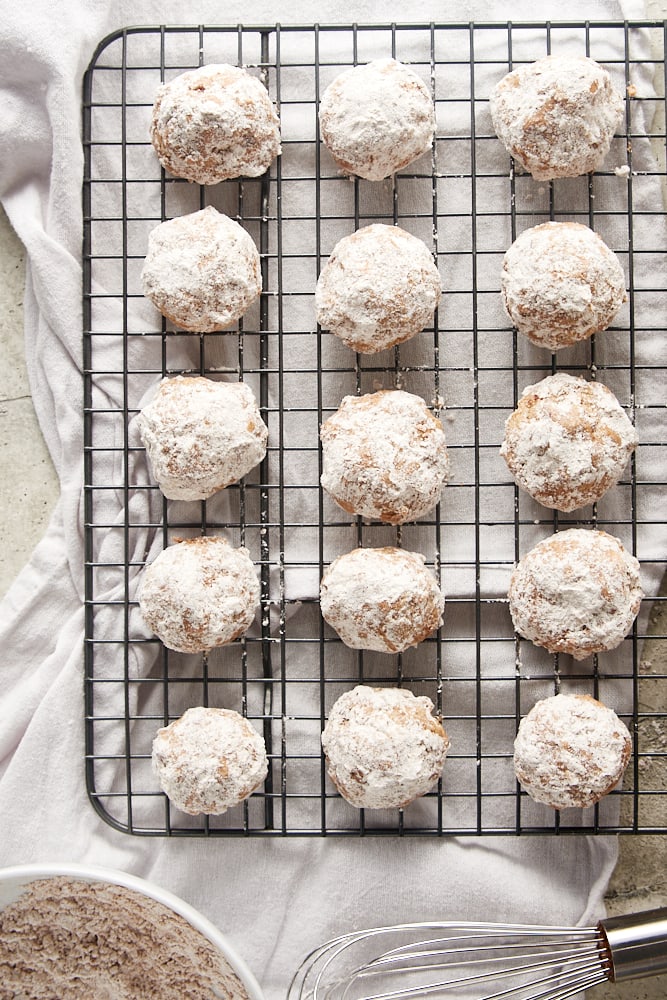
Follow the recipe’s guidelines for when to remove the cookies from the oven. Most recipes will direct you to remove the cookies when they are lightly browned. After that, don’t let them linger too long on the pans. Unless otherwise specified in the recipe, remove the cookies from the pan after about 5 minutes and transfer them to a wire rack to allow them to finish cooling away from the still-warm pan.
I hope these cookie baking tips help you solve your cookie problems. Most often, just a small adjustment is all you need to bake perfect batches of cookies.
May your worst cookie problem be that you’re out of cookies! Happy baking!
My Most Popular Cookie Recipes
- 3-Ingredient Peanut Butter Cookies
- Almond Cookies
- Sprinkle Crinkle Cookies
- Browned Butter Salty Sugar Cookies
- Chewy Chocolate Chip Cookies
- Raspberry Sugar Cookies
- Cream Cheese Peanut Butter Cookies
- Winter Fruit Oatmeal Cookies
Bake or Break is a participant in the Amazon Services LLC Associates Program, an affiliate advertising program designed to provide a means for us to earn fees by linking to Amazon.com and affiliated sites.


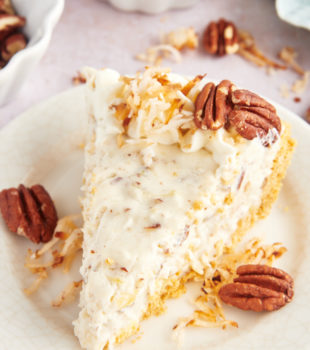
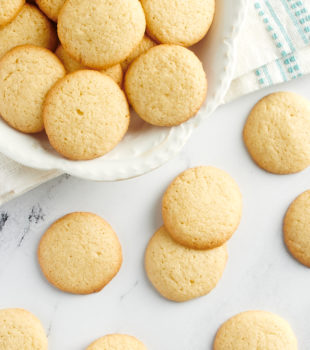
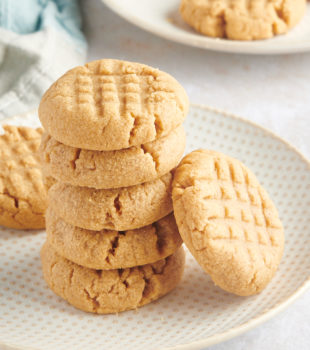


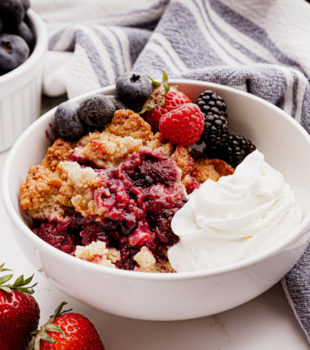
52 Comments on “Common Cookie Problems and How to Prevent Them”
I just wanted to thank you for your timely “Common cookie problem” guide!! At the holidays even the experienced baker who doesn’t bake that often throughout the year has issues when it comes time for holiday baking. Thanks again Jennifer for this valuable information and wishing all a safe and happy holiday season.
My pleasure, Meg! I hope you find it helpful. Happy holidays to you, too.
Hi Jennifer, thanks for the helpful info, anyway I have on and on problem, I swap the flour to rolled out and tapioca flour, swap sugar to honey, and swap butter to margarine. Then my cookies come out in greasy, sticky, not crispy and not sturdy. Any advice for me to get a crispy outside, chewy inside, sturdy, and not greasy? Thank you
Hi! That’s a lot of changes, so I would expect things not to turn out like the original recipe. If you want to make those kinds of substitutions, you may need to do a little experimenting to figure out how to make it work for you.
Love your recipes! I have a question – after dropping cookie dough onto a sheet using a cookie scoop should the cookies be flattened with the bottom of a glass?
Thanks, Eileen! Flattening the cookie dough is usually done to help shape the end result, so it’s sometimes helpful and sometimes not. It depends on how much the cookies will spread on their own. For my recipes, I will include that step in the directions if I find that it’s necessary.
I would like to print some of your recipes but can’t. Will you share and tell me how?
Thank you
Hi, Sharun. There’s an orange “print recipe” button under the small photo in each recipe.
Why don’t my cookies don’t spread when I put the dough in pan it just set there then they get hard
If you’re not changing anything about a recipe, then you may have too much flour. If you scoop down into the flour container to measure, odds are you are using too much. See my tips for How to Measure Flour.
Hi! This is a super helpful article – thank you for sharing for those of us trying to perfect our cookies 🙂
One issue I keep running into is uneven baking and weird shapes… despite following the recipe to a T, chilling the dough, rotating the cookie sheet half way through, using a light/dull cookie sheet (William Sonoma brand) and of course using parchment paper underneath. Any thoughts?
Full disclosure I do sometimes try to make cookies with Oreos or something inside. What would you suggest for helping make a “normal” cookie shape that doesn’t look like the top half of Saturn?? Haha. And even weirder, it’s only some of the cookies that come out this way. Would love any help!!
Hi, Virginia. Uneven baking could be a hot or cold spot in your oven. Consistent shaping is key to having consistent sizing in the final result. Putting something inside the cookies will definitely affect the shape. That Oreo inside isn’t going to change much during baking, but all the dough around it certainly will. The cookie is still going to rise and spread, even if that’s on top of or around something inside.
Hi, can you tell me why my dough does not roll . Dough is breaking apart. Help me please.
Hi, Terry. Your dough could be rolled too thin, or it might need more liquid.
Jennifer I enjoy your articles and recipes. I love cooking and baking and so many sites have turned into what look like “advertisements” for various companies. I understand ” affiliations” and links and I appreciate the importance as well as the helpfulness. Your presentation is without the “advertising” affect; yet with the helpful links if wanted. Your explanations on recipes are thorough and concise as well. I also love recipes that take one printed page. A long speech to say you do a great job in my opinion and thanks for sharing your knowledge and great foods.
Thank you so much, Sara! 🙂
I am going through fits trying to make gluten free cookies that won’t be brittle or dry and the additional problem is that I am having to also substitute sugar anyway I can, so I don’t have a diabetic issue happening in our household. The problem is that the cookies end up being so dry they are overly brittle and break into sand like pieces. I don’t mind using apple sauce in place of sugar, if I can, but artificial sweeteners don’t seem to work right in making cookies. HELP, Please??????
Hi, Mary. I’m a traditional baker, so I don’t have much experience with substitutes for flour and sugar. Remember that sugar adds moisture, so it may just be as simple as lacking enough moisture by removing the sugar. Try adding more liquid to the recipe, either by increasing existing liquid in the recipe or maybe just adding some water.
thank you! Big deal! Huge. It’s frustrating that the low gluten and sugar folks don’t discuss this, leading to a ‘cookie graveyard!”
We shall do!
Would apple sauce help???
It’s possible, Mary. I’m usually hesitant to go that way depending on the other flavors.
Coconut sugar is a good substitute but I find it more like brown sugar. Stevia is sweeter but substitutes well, just try different amounts. Keeping them most is difficult on some types. Roll out cookies I use psyllium just and xanthan gum to hold shape when baking and make sure the dough is well chilled before baking and keep the shapes simple. Drop cookies are not as hard but make sure they rest and are cold before baking.
I am planning to use Pamela’sglutin free pancake and baking mix for my cookies. What is your opinion for this substitute flour?
Hi, Liz. I’ve not tried that product, so I can’t offer any advice. That it’s called a pancake and baking mix sounds like it’s more like Bisquick than plain flour, but again I haven’t seen it or used it. If you try it, let me know how it works.
My sand tart cookie dough is sticky and won’t roll in a ball. Any idea why.
It might need a little more flour. Add a small amount at a time until it’s not sticky. You can flour your hands, too, to make it easier to handle.
Hi,
I am very new to baking and facing issue with browning of cookie. The cookie surface is getting evenly browned but on the bottom only the sides are getting browned, the middle portion looks raw and is little cakey. I have tried
1) Changing the baking sheet
2) Reducing the temperature to 170 degree from usual 180 degree
If the bottom bakes up evenly I think the cookie come s out beautifully. Please help on what I may be doing wrong and how to fix. Thanks
Hello! If your cookies are getting done more quickly on the outside than the inside, then my best guesses would be that your oven temperature is too high (or inaccurate, which you can test with an oven thermometer) or that you’re using a dark pan. A light-colored, non-shiny pan tends to work best. Also, make sure your rack is in the center of the oven.
Hii..I baked the cookies at 175 degrees for 13 minutes but they are not brown and easily broken . Please advise me what to do
Hi! I baked my white choc cookies for 19 mins at 160 degrees they turned out good nice and crunchy but I have a problem here. How do I prevent the exposed white choc chips on the dough from browning?
Pls advise
Hi, Sharen. I’ve not had that sort of problem with white chocolate, so I’m not sure what could have happened other than a too-long baking time. I would also check the ingredients for the white chocolate chips. Many are not really white chocolate, but are called white baking chips. The first ingredient for white chocolate should be cocoa butter.
Why my butter turns out runny when I used hand whisk to mix the white sugar and light brown sugar?
It sounds like your butter is getting too warm. Butter begins to melt at around 68°F, so it doesn’t need to come to room temperature. Mixing warms it some, too, so keep that in mind as well.
I like soft and chewy cookies. So do my neighbors who I like to treat with my baking. How can I make sure that they stay that way. I usually take the cookies out of the oven just before they look done. I have also tried adding corn syrup to the batter.
What do you suggest to make every cookie recipe soft and chewy?
Not every cookie is designed to be soft and chewy. I usually try to describe the texture of the cookie recipes I share, so pay attention to how they’re described here or wherever you’re looking at recipes. For cookies that should be soft and chewy, make sure you’re measuring your ingredients (especially flour) accruately, don’t over-mix, and don’t over-bake.
Hi mam , i want to know when we remove baked cookies from tray it stick to our fingers. How to prevent cookies from it. Plz tell
Be sure you’re allowing them to cool as directed in the recipe. Removing them too soon can make them messy and sticky.
Hi Jennifer, My biscuits are always getting soggy once dipped in milk or tea. What should be done to prevent biscuits from being soggy but still crunchy?
The texture of the cookie has a lot to do with that. Crispier, drier cookies will hold up the best for dunking. If the cookie is already soft, it’s likely not to work well. Look for recipes that specify the cookies are crispy and crunchy.
Hi I just wanna ask I’m new in baking what should I do to avoid may cookies to break easily… Thanks alot
Hi, Maryl. If it’s happening with every recipe, then check that your measurements are accurate (see How to Measure Flour) and that you’re letting the cookies cool as directed.
Hey! So, I’ve tried baking cookies last time and they turned out to be cake-like… How can I prevent this? I used oil instead of butter since I had none at the time, is that the reason? Haha.. Im doing it myself without my mom’s assistance so maybe I did something incorrectly..?
Hello! My first guess would be that you’re using too much flour. That’s pretty common and easy to do. See my tips for How to Measure Flour. Also, oil and butter aren’t always a 1:1 substitution. In many cases, you’d need to use about 3/4 as much oil as the butter in a recipe. Also, if you’re supposed to cream the butter in the recipe, then oil is generally not a good substitution.
Hi, my problem is that the dough is too tacky and won’t release from the pharment paper after I cut it with the cookie cutter. I have cooled the dough and also floured it before I rolled it. Any suggestions? Thank you.
Is this for every recipe or a specific recipe? If it’s the latter, there could be something off in the recipe. In either case, check the accuracy of your measurements. You might try rolling cookies on a silicone mat instead of parchment paper.
Thank u. Love the info. Very helpful. I live in Ethiopia. No all purpose flour just pure flour. For your recipe do i need to add baking powder too bc of the flor here is not all purpose or self rising.? Thank you
Hi, Crystal. All-purpose flour doesn’t have any baking powder mixed into it, so you don’t have to make any kind of adjustment for that.
Hi Jennifer I really like your article. It is very helpful. I wanted to know why my cookies don’t soften or melt when I dunk them in tea ??? They remain as hard as without dunking.
I would think that depends on the cookie itself and its texture. A dense, thick cookie won’t absorb liquid as well as a softer, lighter cookie.
Hello! I’ve been trying to bake 4 servings of 25 cookies (25 cookies on the tray) and I have noticed by the third and fourth time i bake them, the cookies look darker than the first and second batch and a little underbaked in the middle! Keeping in mind that the time and temperature of the oven did not change and I place the dough in the fridge between bakes! How can I avoid the dough as well as the cookies turning darker by the third and fourth bake?
Are you using the same pan for each batch? If so, you want to make sure you’re allowing the pan to cool completely between batches.
i want to make my cookies little hard to avoid breaking during ship’ they always becomes very soft
Hi, Kamla. Making a change like that usually depends on the recipe. Sometimes, you can simply bake them a bit longer but other times you’d need to change something about the ingredients.